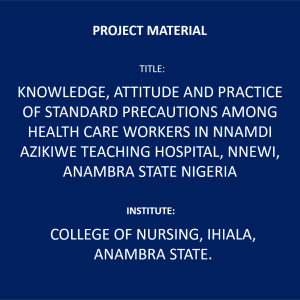No products in the cart.
ASPHYXIA (NEONATAL ASPHYXIA)
₦7,250.00
ASPHYXIA (NEONATAL ASPHYXIA)
- PROJECT TYPE: SEMINAR
- INSTITUTE: COLLEGE OF NURSING, OUR LADY OF LOURDES HOSPITAL COMPLEX, IHIALA, ANAMBRA STATE
- PROJECT YEAR: 2022
- NUMBER OF PAGES: 15
- FILE TYPE: DOC
INTRODUCTION
Asphyxia, the failure or disturbance of the respiratory process brought about by the lack or insufficiency of oxygen in the brain. The unconsciousness that results sometimes leads to death (Emechebe GO et al 2016).
Birth asphyxia can be defined as a clinical condition characterized by inability/failure to initiate or sustain spontaneous regular respiration at birth leading to varying degree of hypoxic and ischaemic injuries to body tissues and organs. Historically categorized into two grades asphyxia livida (blue asphyxia) – blue appearance of the newborn. Muscle tone is good and the infant is responsive to stimuli, asphyxia pallida (white/pale asphyxia) more severe, baby is pale, flaccid and unresponsive to stimuli.
Currently, birth asphyxia is graded into 3 categories (mild, moderate and severe) using the APGAR SCORE According to the American College of Obstetricians and Gynecologists(ACOG) and the American Academy of Pediatrics, a neonate is labelled to be asphyxiated if the following conditions are satisfied: Umbilical cord arterial pH <7 referred to as severe fetal acidemia, reflects a degree of acidosis, where potential risk of adverse neurologic sequelae is increased; Neonatal neurological manifestations (e.g. seizures, coma or hypotonia); and Multisystem organ dysfunction, e.g. cardiovascular, gastrointestinal, haematological, pulmonary or renal system (Kleigman et al 2016).




